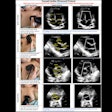Movies and documentaries are more likely to highlight harmful findings or procedural problems in medical imaging, suggests a study published November 22 in the European Journal of Radiology.
Research led by Ali Rastegarpour, MD, from the University of California in Los Angeles showed that in entertainment media, mammography is often the target of criticism, MRI's pros and cons are highlighted, and ultrasound is most often used to represent pregnancy.
“Recognizing how imaging modalities are depicted in film may help identify targets to address in health marketing campaigns and how to rectify certain attitudes and beliefs regarding imaging,” Rastegarpour wrote.
Prior research suggests that medical imaging’s depiction in entertainment media is limited and could be inaccurately portrayed in movies, TV shows, and documentaries. This could contribute to a lack of awareness about radiology among the general public, he noted.
Rastegarpour studied how radiology keywords related to different imaging modalities used in film, tracking how modalities are represented in feature-length films and documentaries.
He retrieved 51 titles from the Internet Movie Database (iMDb), identifying feature films containing keywords related to multiple radiology modalities used in the plot summary. Movie and documentary genres consisted of drama, romance, comedy, horror, and science fiction.
Rastegarpour also reviewed the use of imaging as it related to the film or its plot. He reported the following findings:
Common themes that may have a negative connotation included imaging revealing a harmful process (23.5%) or being portrayed as harmful (17.6%).
A harmful imaging finding is shown more often than normal findings, 12 out of 13 times (92.3%).
Anti-mammography documentaries accounted for four out of six movies about mammography, with no titles portraying mammography in a positive light.
While 31 titles portrayed imaging in a positive or neutral light, 21 portrayed imaging negatively.
Seventeen of the 51 titles featured MRI. Of these, five presented MRI as a source of harm, while three others showed MRI revealing a harmful process. Seven other titles either presented MRI as a technological advancement or as revealing a new discovery.
Twenty titles featured ultrasound, 10 of which featured the modality for the depiction of pregnancy or children.
Rastegarpour highlighted that the radiology community can help shape these representations.
“This can be done by … health marketing efforts to have other depictions built into our media,” he wrote. “Maybe instead of imaging advancing the plot, it could tell us something about the characters instead, and as such be used in more versatile ways.”
Read the full study here.




















